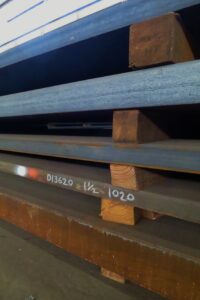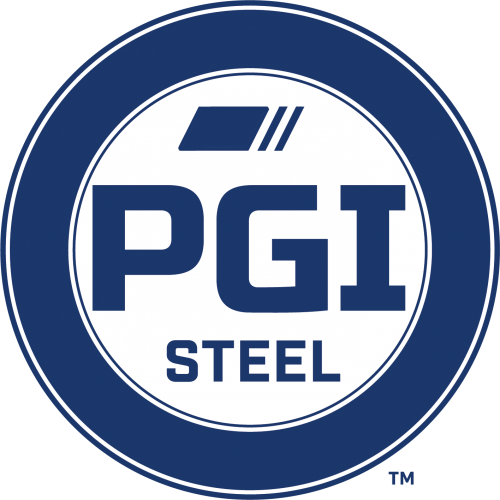1020 Steel General Information
 According to the four digit alloy numbering system, 1020 Steel is a hot rolled chemistry plate whereby “10” designates a basic plain carbon steel and “20” designates the approximate carbon content. HR 1020 steel is a general purpose, mild, low-carbon steel with good overall, structural steel properties. Automotive, military and/or nuclear specifications may call for an additional “ASTM A827” or “ASTM A830” specification listed on the 1020 MTR’s, as AISI no longer offers support for the AISI 1020 steel specification. The ASTM A830 specification covers approximately 48 chemistry only plates, ranging from G10060 – G15520, non-inclusively. 1020 plate is a chemistry only plate, meeting the chemistry make-up listed below. 1020 steel demonstrates high machinability capacity and offers excellent welding characteristics. There are no tensile, yield, hardness or other mechanical requirements for the manufacturing of 1020 plate.
According to the four digit alloy numbering system, 1020 Steel is a hot rolled chemistry plate whereby “10” designates a basic plain carbon steel and “20” designates the approximate carbon content. HR 1020 steel is a general purpose, mild, low-carbon steel with good overall, structural steel properties. Automotive, military and/or nuclear specifications may call for an additional “ASTM A827” or “ASTM A830” specification listed on the 1020 MTR’s, as AISI no longer offers support for the AISI 1020 steel specification. The ASTM A830 specification covers approximately 48 chemistry only plates, ranging from G10060 – G15520, non-inclusively. 1020 plate is a chemistry only plate, meeting the chemistry make-up listed below. 1020 steel demonstrates high machinability capacity and offers excellent welding characteristics. There are no tensile, yield, hardness or other mechanical requirements for the manufacturing of 1020 plate.
1020 Steel Plate Chemical Composition
AISI 1020/ASTM A830 (steel chemical composition table)
% Carbon (C) 0.170 – 0.230
% Iron (Fe) 99.08 – 99.53
% Manganese (Mn) 0.300 – 0.600
% Phosphorus (P) ≤ 0.040
% Sulfur (S) ≤ 0.050
Common Uses of 1020 Steel Plate
Common uses of 1020: shim plates, gusset plates, bridge plates, bearing plates, robot bases, column base plates, press parallels, press platens, tooling plates, machine plates, machine frames and pedestals, steel table tops, base plates, mold & die, machine mounting plates, etc.
PGI Steel capabilities:
- (3) 40 ft. long plate cutting tables – oxy-fuel flame cutting and plasma cutting
- Stress relieving and annealing
- Blanchard grinding & surface grinding
- CNC machining
- Fabrications and machine building
Mill certifications or material test reports (MTR’s) are available upon request. Test reports include plate specifications, heat numbers, chemical and physical properties listed by the manufacturer or producing mill. PGI Steel stores an electronic file copy of all test reports indefinitely.

